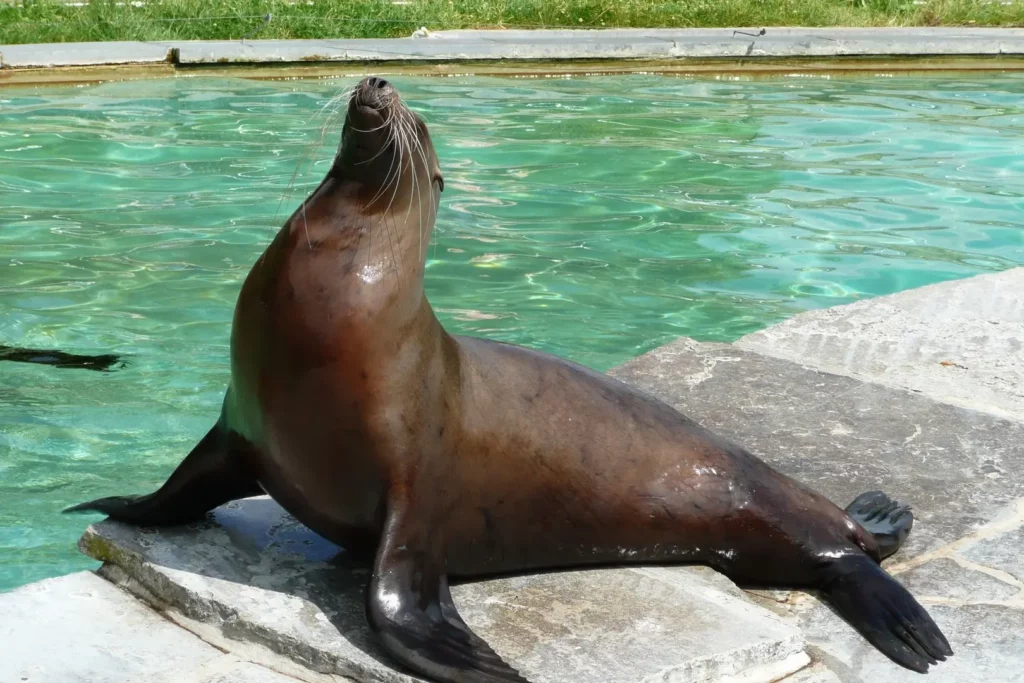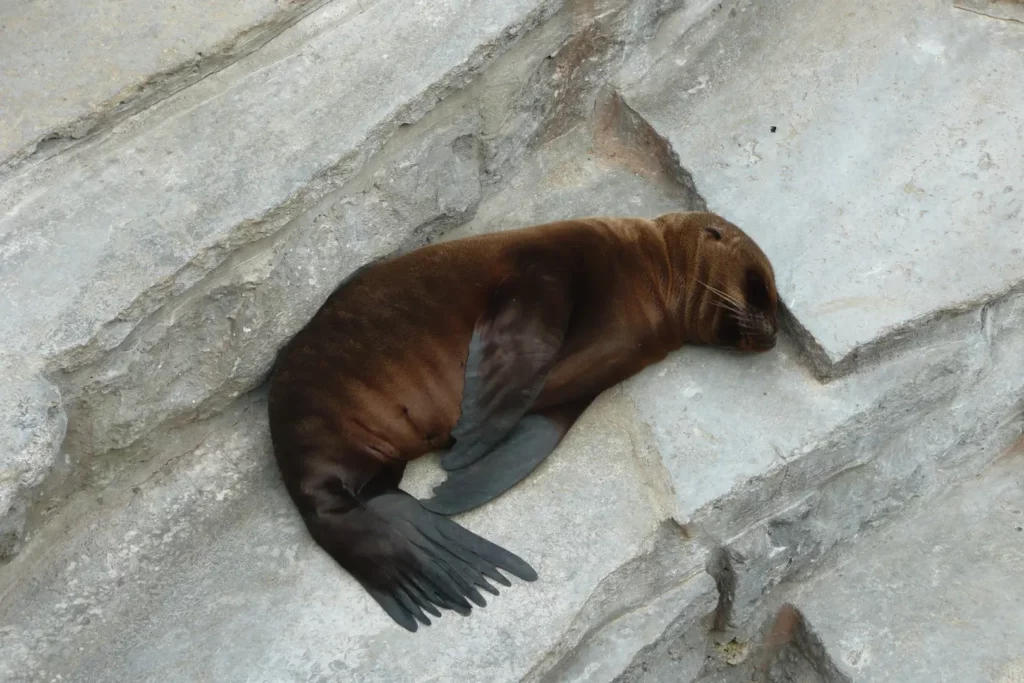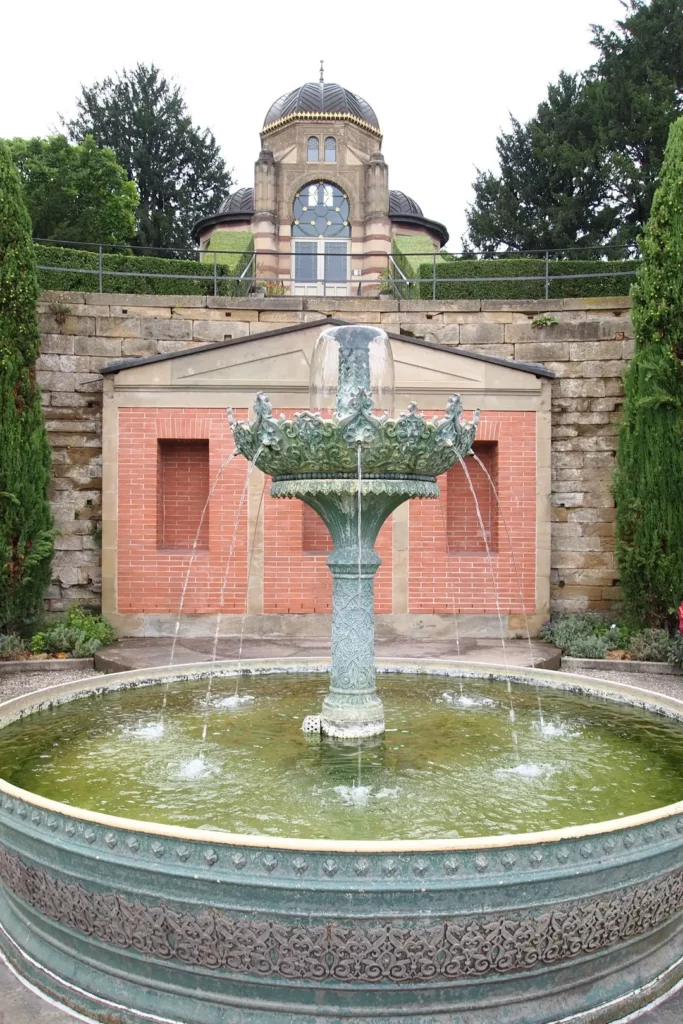Last Updated on 15/04/2023
I think the previous topic has convincingly proved that Wilhelma is worth a visit for the sake of flowers alone. Now let’s add the animals as well. Map is on the end of the post.
You can read about Stuttgart itself here.
Ludwigsburg palace and gardens
Around Stuttgart places to visit map
Swabian Alb map
90+ parks and gardens in Germany on the map
North Black Forest. What to see
Sights of Black Forest (Schwarzwald). 1. From Altensteig to Gengenbach
Bad Teinach Zavelstein Crocus fields
Map

Entrances: by the river main (U14), from above (also U and Mahle parking), to the left – from the Nordbahnhof station and the Am Löwentor museum. Cash desks at the side entrances may not work all the time – see the schedule.
The numbers are on the most complete and interesting route from the side of the main entrance. The arrows show the direction of passage of the pavilion.
- greenhouse with cacti and orchids and seasonally camellias (winter), rhododendrons (May) or fuchsias (summer)
- Viewed from the inside aviary with birds and penguins
- Sea lions and pelicans
- Aquarium
- Garden of magnolias (March) and lilies and lotuses (July – August)
- Greenhouse with cacti, useful plants and ferns. On the second floor, birds and the night world (now under renovation)
- Spider monkeys and gibbons
- Saimiri monkeys
- Kea
- Parrots
- Giraffe
- Predatory cats and elephants
- Meerkats
- Pavilion of chimpanzees and gorillas
optional – farm and camels in far end - Forest of mammoth trees
- Beavers and snow leopards
- Pavilion South America
- Pavilion of insects
Aquarium
The Wilhelma aquarium is better than some stand alone aquariums. The only thing it doesn’t have is a large pool with big sharks and rays. And so everything is in place in excellent quality: fish of the northern seas, fish of the tropical seas, electric eel, small sharks. Seehorses of two kinds and jellyfish. Assorted crayfish and crabs. Mangrove fish with eyes on top. Several big crocodiles, turtles, lizards, pythons and poisonous snakes, poisonous frogs.




Insect pavilion
Another specialized pavilion at the bottom of the park. In addition to butterflies, which are not so many here, you can see flying foxes and extremely nasty cockroaches.
Pavilion South America
This pavilion has a real jungle and waterfall. At the beginning, you are greeted by South American monkeys, then bats and an anaconda, and an alligator is waiting below. Some birds are in enclosures, some are free to fly, but it is not easy to see them.


Other pavilions in the lower part are now closed for renovation. Including the pavilion of small animals, where chickens were hatched.

The woody porcupine was also in this pavilion.

Feeding of sea lions
The sea lions got now a new pool. Therefore, the photos are different from what it looks like now.
Feeding sea lions in some zoos is very boring: they say what their name is, how much they weigh and other information. At the same time, sea lions do practically nothing. In Wilhelma, they try to carry out a whole performance with jumping and standing on their heads. Of course, the performance can be reduced if the females are waiting for the cubs or feeding them, or if the weather conditions are bad.


Thieves



Pelicans live next to the sea lions.

The Damascus pavilion at the end of the pond is used for exhibitions, and around it there are usually aviaries with small birds.

Aviary of birds
The aviary is located near the main entrance. There are penguins next to him. Penguins are fed too, but it’s simple feeding.


Herons have completely lost their fear in the hope of profiting from a free fish. People are at arm’s length from her (you can see a hand in the corner).

You can enter the aviary and observe birds without an annoying mesh.

And parrots go crazy sometimes

On the other side of the aviary is a flamingo.

Terraces
Now let’s go upstairs. Before the ascent, do not forget to look into the monkey house for the arachnid monkeys. In German they are called Klammeraffe (klammern – to cling). And for good reason: these monkeys live in the upper tiers of the forests of South America and do not descend to the ground. A tall aviary with numerous crossbeams was made for them, along which they literally fly, as if barely touching.
Our next point is terraces. There are two of them. On the lower one, the most interesting are small monkeys, kea parrots, on the upper – beautiful colorful parrots.
Saimiri are totally adorable monkeys, quick-witted and very “human” in behavior.



For Kea was created all the conditions for useful activities for the dismantling and destruction of various objects.
A peacock often walks on the terraces. Apparently, he is already tired of his harem and they do not pay attention to him. Therefore, he loves to show himself to the public.

Africa
Climbing upstairs, we find ourselves in front of a long pavilion of predatory cats. Animals can be both outside and inside. Cheetahs always walk separately.

In the small house of giraffes, you can also see a couple of small animals, for example, a jerboa. They are worth a little bit of a nightmare smell. And besides, indoor giraffes give a completely different impression with their enormity. On the street, it disappears.

Opposite are elephants, rhinos. Only two elderly elephants remained from the group of elephants – the rest were sent to Karlsruhe, where the elephants died during a fire.

A little further hippos and tapirs. Avoid getting close to a hippopotamus if it stands with its tail towards you. Hippos tend to scatter excrement, quickly swinging their tail like a propeller.

Gorillas and chimpanzees were presented a new large pavilion for anthropoids. Orangutans have not been seen for a long time – their pavilion was closed for reconstruction.

Wilhelma is also known as a nursing center for small gorillas. In the new pavilion for “babies” there is a separate cozy room. Caring for them is not too different from caring for human babies. Now there are no kids, but a few years ago there were several of them, and the employee spent all the time with them.
Small gorillas in diapers.

America
A bear-house, snow leopards, beavers, mountain rams are located apart on another slope. The forest of huge mammoth trees is especially attractive. King William, learning about the discovery of these trees in America, ordered Lot (15 grams) of seeds. Lot was understood as “a lot of” and sent to the king a whole pound (500 grams), which corresponds to 100,000 seeds. A tenth of them sprouted, and not many plants survived the extremely frosty winter of 1879. The trees were distributed throughout Württemberg.
This part of Wilhelma is also in the process of being renovated. The farthest corner is occupied by a new aviary for snow leopards.

Opposite them are beavers. It is easier to see them in the late afternoon. During the day they sleep in the house and can be seen through the glass.

There are no more polar bears. Their spacious aviary will be remodeled.
Among the interesting animals, there are also peccary pigs, an anteater (which can be seen extrem selten) and various llama-like ones.
Farm
Finally, if you still have strength left, you can reach the farm in the far corner.

All Around Stuttgart places to visit map
Do you enjoy the site without cookies? This means that I work for you at my own expense.
Perhaps you would like to support my work here.
Or change your cookie settings here. I don’t use personalized ads




